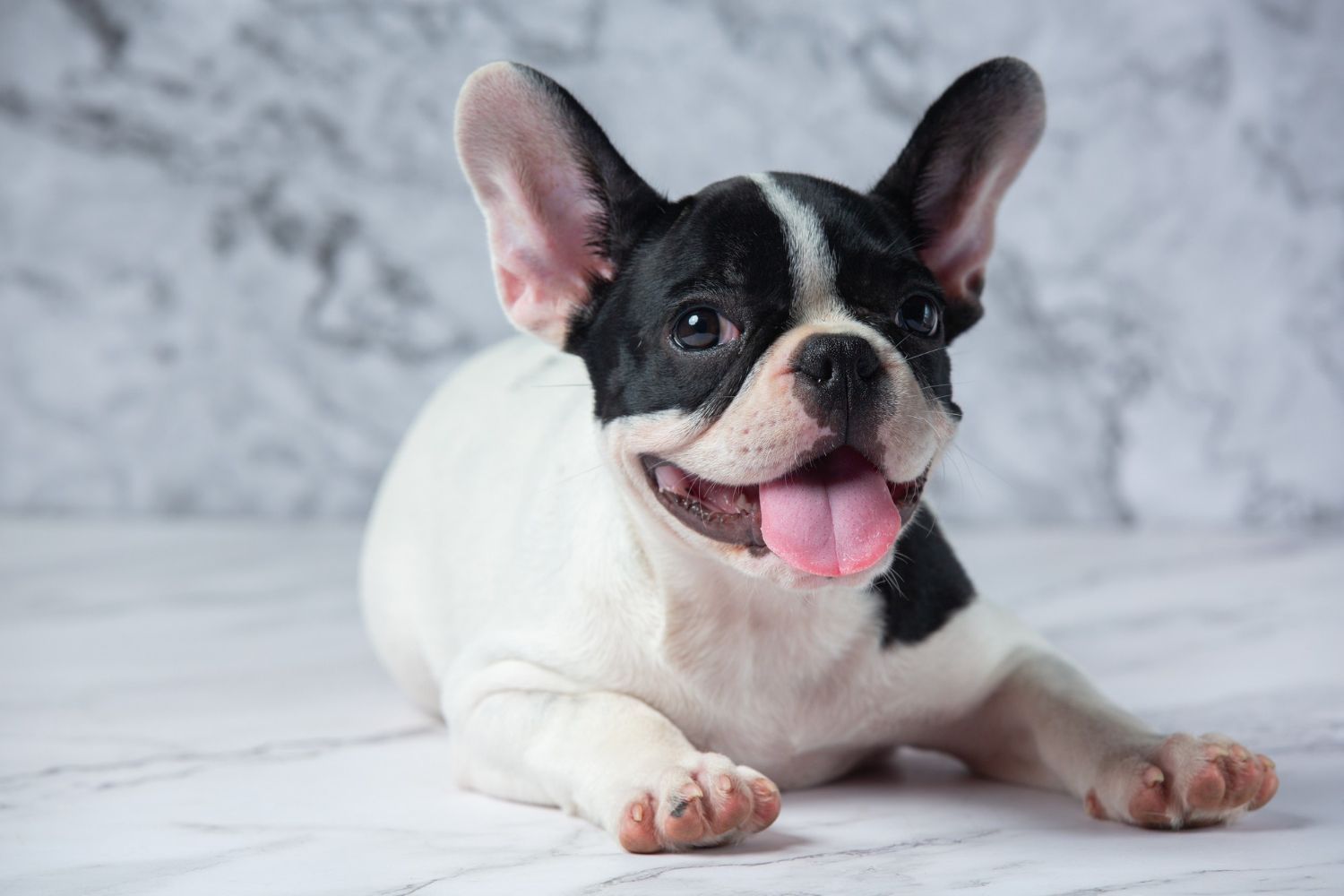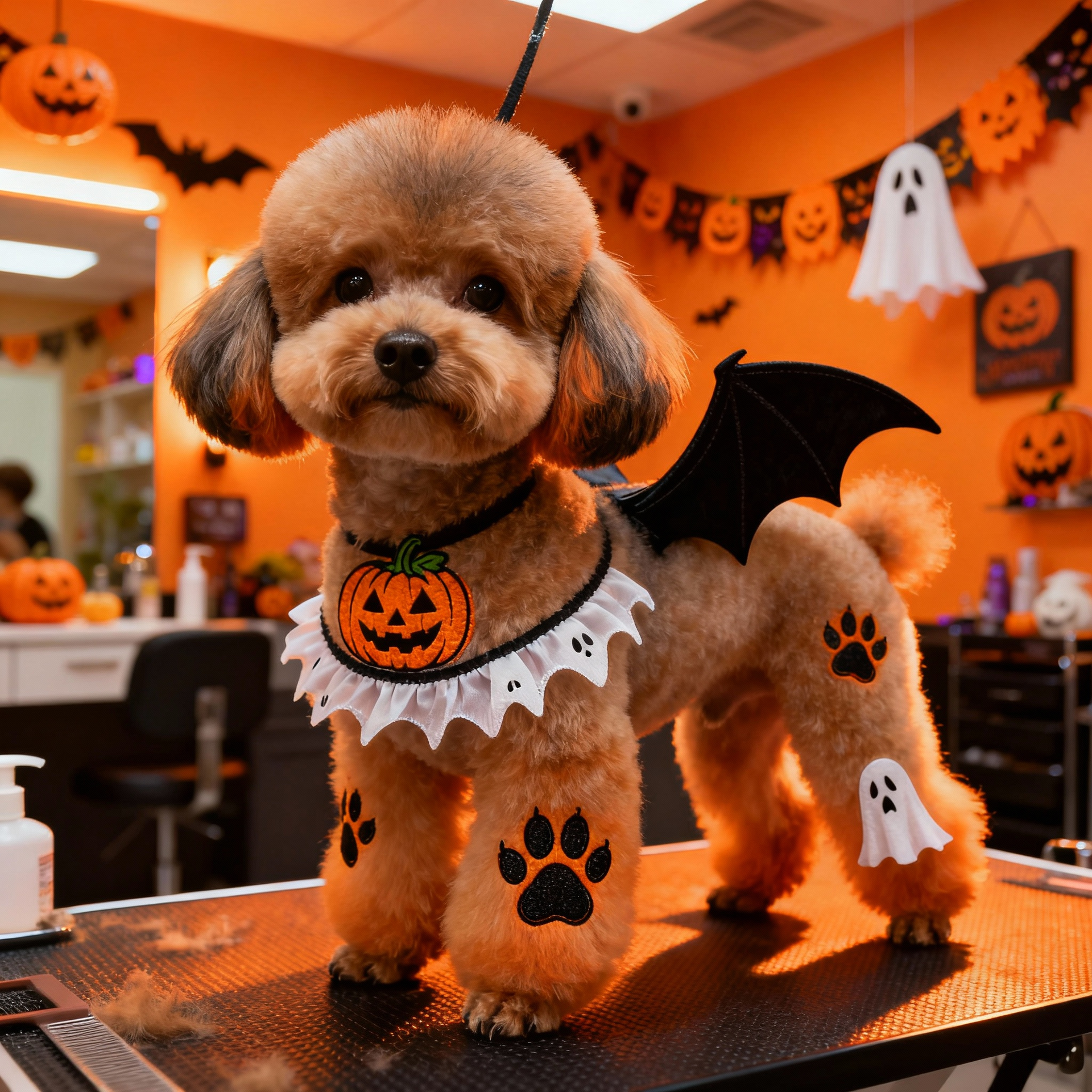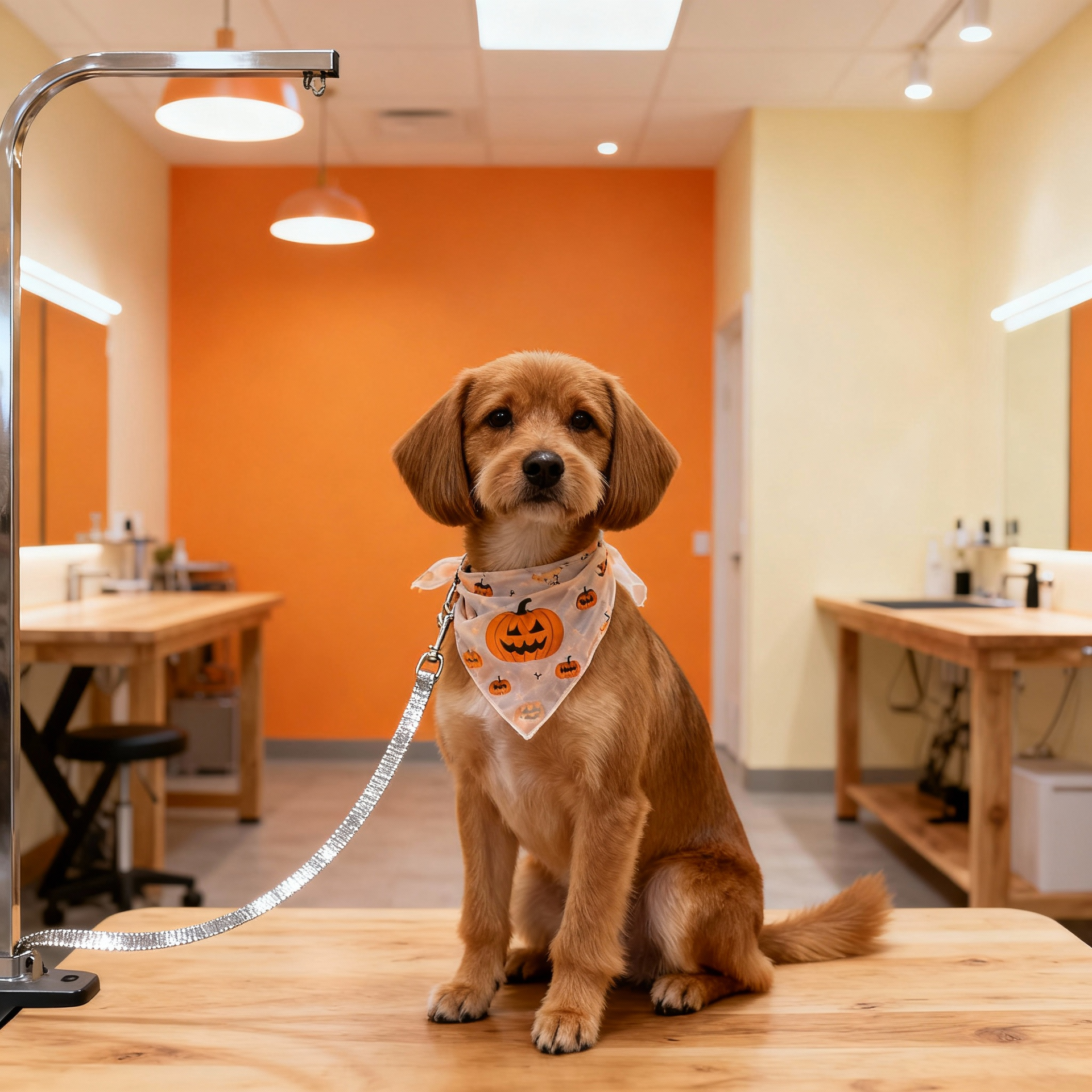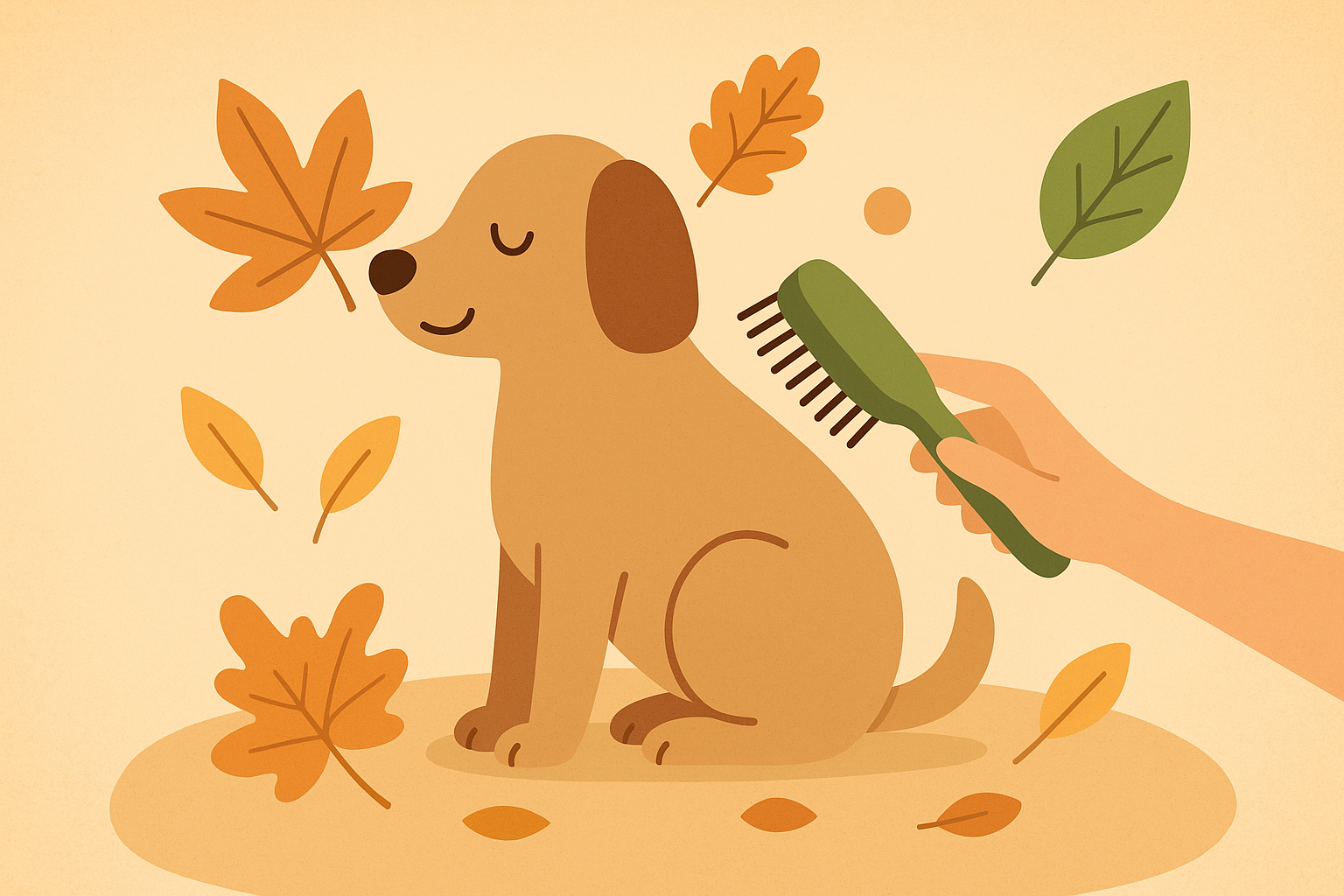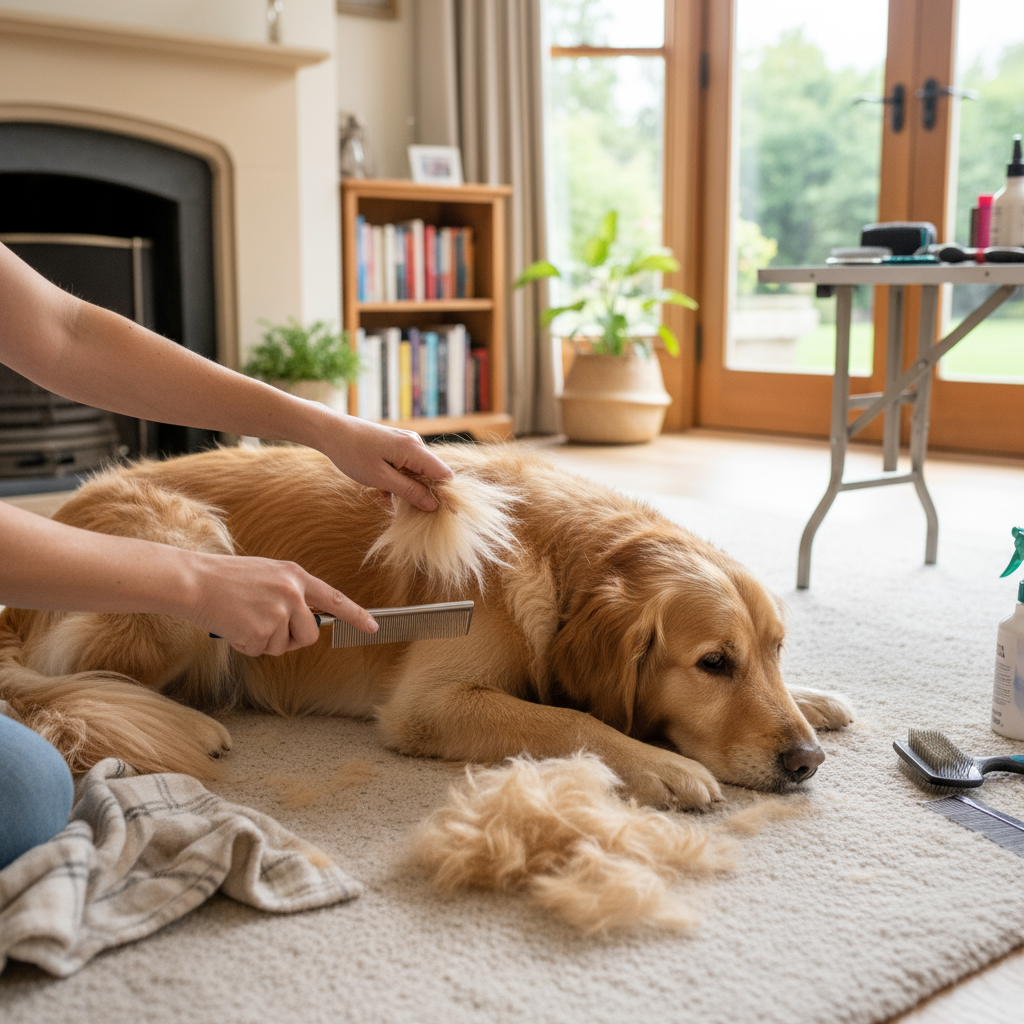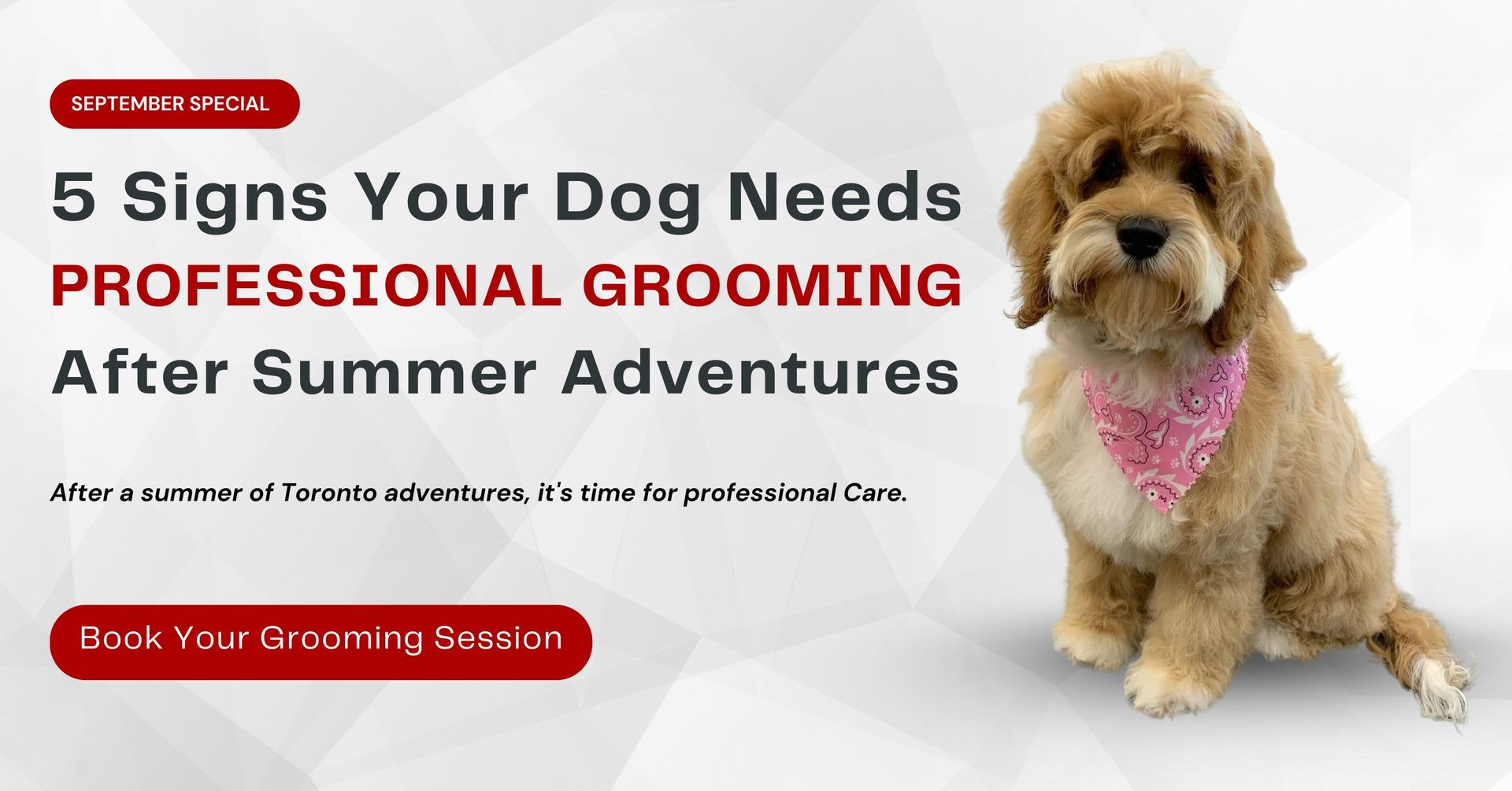By Jacob Munro
•
July 3, 2025
Toronto’s summer heat can top 30°C on pavement, so grooming isn’t just about looks – it’s about your dog’s comfort and safety. A well-maintained coat helps regulate temperature. The Canadian Kennel Club (CKC) explains that a properly brushed double coat acts like built-in insulation: it slows heat absorption and protects against sunburn. For this reason, CKC advises against shaving most double-coated breeds in summer, since removing their topcoat exposes skin to UV rays and can make them overheat. Instead, stick to shorter trims or thinning cuts (ask your groomer about “puppy cuts” or cooling clips) to keep dogs cool while preserving natural protection. Essential Summer Grooming Tools Be prepared with these summer grooming essentials: Brush and Comb. A quality slicker brush or undercoat rake for thick coats, and a detangling comb for medium coats, will pull out loose fur and prevent mats. Brushing spreads natural oils for a shiny coat and gives you a chance to feel for bumps, rashes, or pests. (As CKC notes, brushing first removes dead hair and loosens mats before trimming.) Mat Remover. A dematting tool or comb helps safely break up any stubborn tangles without cutting. Regular brushing means fewer mats in the first place, but keep a comb on hand for those hard-to-reach spots. Dog Shampoo & Conditioner. Use a gentle, pet-formulated shampoo (look for veterinarian-recommended formulas). In summer, a moisture-retaining conditioner can keep skin from drying out. Avoid human products , which are not pH balanced for dogs. Dog-Safe Sunscreen. Dogs do get sunburned on thin-haired or pink-skinned areas (nose, belly, ear tips, groin). Apply a broad-spectrum, fragrance-free pet sunscreen with SPF 15 or higher on exposed spots before outdoor play. (Pet experts agree: yes, you should put sunscreen on your dog when needed. ) Reapply every few hours, especially after swimming, and protect dogs with white/short coats even more vigilantly. Nail Clippers or Grinder. Keep nails short to prevent curling or cracking. Long nails make walking painful and can even affect posture. If you’re not comfortable trimming at home, schedule regular trims with your groomer or veterinarian. Paw Protection. Hot asphalt and concrete can burn pads. If a sidewalk is too hot for your bare foot, it’s too hot for paws. Apply a pet-safe paw wax or balm before walks to create a protective barrier. On extremely hot days, lightweight dog boots can shield feet completely. After each outing, check pads for redness or cracks, and soothe them with balm. Ear Care Supplies. Dogs love swimming in summer, but moisture in the ears can invite infections. Have a gentle vet-approved ear cleaner and cotton balls on hand. After baths or swims, gently dry ear flaps and consider tucking a dry cotton ball in each ear to wick away moisture (just remove them later to avoid infection). Water Gear. Always carry fresh water and a collapsible bowl on walks. Frozen “pup-sicles” (diluted broth or fruit bits frozen in water) make fun treats, and a cooling mat provides relief at home. Keep these tools organized for quick use. And remember, if managing all this at home is overwhelming, ask a professional groomer – Paws in the Bath offers Bath & Brush and Bath, Brush & Tidy packages to handle shedding, detangling, nail trimming, ear cleaning, and more between full grooms. Coat Care: Brushing and De-shedding Daily or multi-times-weekly brushing is one of the best things you can do. It removes loose fur, prevents tangles, and lets air flow next to the skin so your dog stays cooler. Brushing prevents mats – those tight clumps trap heat and moisture. CKC grooming experts advise brushing before any clipping or mat-removal to loosen dead fur. As you brush, spread out tangles and praise your dog; make it a calm bonding time. Dogs whose coats are brushed regularly often come to enjoy it. During peak shedding (common in summer, especially for double-coated breeds), consider professional de-shedding. Ask your groomer about a “Bath & Brush” spa service : it combines a gentle bath with specialized tools to remove the loose undercoat. Paws in the Bath describes this service as a game-changer for fur everywhere – it includes a deep conditioning wash, undercoat rake, and brushing to pull out dead fur. In between full haircuts, a Bath & Brush can drastically cut down the hair tumbleweeds in your home and keep your dog’s coat healthy and airy. Never attempt to shave a double coat all the way down. Maintaining at least some length protects skin. The CKC notes that a shaved double-coated dog will often grow back an insulating undercoat faster than the guard hairs, making overheating worse. Instead, trim excess fur: remove long tufts under the belly and sanitary areas, and have longer hair thinned. If mats have already formed, visit a professional groomer – they have safe techniques (and experience) to detangle or remove mats without harming the skin. Haircuts and Trims Rather than DIY haircuts at home, schedule a summer trim with your groomer. Professional groomers know the latest breed cuts and cool-clipping techniques. For example, a groomer can give many breeds a puppy cut (a uniform, short length all over) or a tailored breed style that leaves at least an inch of coat. For Husky-type and other double-coated dogs, groomers often use thinning blades or “summer cuts” that remove loose undercoat while preserving the protective topcoat. As CKC experts recommend, consult your groomer about the correct clip for your dog. This ensures an attractive style that still keeps your dog cool. Ask your groomer about Paws in the Bath’s Bath, Brush & Tidy service , which includes a gentle wash, full brush-out, sanitary trim, paw cleaning, and a light coat trim. These sessions are ideal for managing everyday messes and shedding between full grooming appointments. They help keep coats free of tangles, nails trimmed, and even ear hair tidy – all of which make your dog more comfortable in the heat. In short, use professional help for the big jobs (matted fur, thick coats, complex trims) and daily brushing or spot baths at home in between. Bathing Basics Bathe your dog only as needed in summer, usually about once a month unless they get very dirty. Over-bathing can strip skin oils and cause dryness or irritation. Before each bath, brush out all tangles and loose fur to prevent tighter mats when wet. Use lukewarm water (never hot) and a high-quality dog shampoo from neck to tail, paying attention to the belly and feet. Rinse thoroughly until the water runs clear – any soap left on the skin can clog pores. (One groomer notes that dogs have multiple hairs per follicle, so trapped shampoo will irritate if not completely rinsed.) When drying, towel or blow-dry on a cool setting and brush through one more time to remove lingering loose hair. Finally, reward your pup with praise and a treat to build a positive bath-time experience. Check and clean ears at bath time. Don’t shove anything into the ear canal – just use a vet-approved cleaner on cotton to wipe the outer ear. For breeds prone to ear hair, groomers can pluck excess hair gently to improve airflow. After a swim or bath, a dry cotton ball in each ear opening can help wick moisture out and lower infection risk. A quick facial wipe with a damp cloth removes any tear stains or debris around the eyes. Nails and Paw Protection Short nails are critical for happy walks in summer. Check your dog’s nails weekly – the combination of grass, trails, and pavement can wear nails unevenly. If nails click on hard floors or curl under, schedule a trim. Regular trimming or grinding is essential. Many groomers offer paw-dicures or nail trims as a standalone service. Professional groomers have the tools to smooth rough edges and even file nails, making every step safer and more comfortable. (If you do trim at home, cut only the tip and have styptic powder ready for any quick nick.) Inspect paw pads after each outing. Summer pavement can burn skin fast. As the Ontario SPCA advises, if the pavement is too hot for your bare foot, it’s too hot for dog paws. Apply a protective paw wax or balm before walks to guard pads from asphalt heat (and later help heal any cracks). On extremely hot days, consider dog boots for long walks – they’ll also protect against city de-icers on cooler days. After walks, hose off dirt and heat, then rub a pet-safe balm into the pads and between toes. Healthy, smooth pads mean your dog can trot happily through the summer. Sun, Shade, and Skin Safety Dogs can sunburn just like people, especially on bald or pink-skinned patches. Apply a dog-formulated sunscreen (or an unfragranced baby sunscreen with at least SPF 15) to noses, ear tips, bellies, and other exposed areas before heading out. Experts agree: “You should put sunscreen on your dog” when they’re in direct sun. Reapply often (every 2–4 hours) if they stay outdoors, and never let them lick off treated areas. Along with sunscreen, simple shade and hydration are your best tools. Always provide fresh water and a shady retreat — even a canopy or cool mat in the yard can make a big difference. Limit walks to early mornings or late evenings, when it’s coolest, and never leave your dog unattended in a parked car. Ontario SPCA cautions that “even a short time in a hot environment can be life-threatening” – car interiors heat up dangerously fast, even with windows cracked. In extreme heat, opt for indoor play or kiddie pools instead of midday parks. Parasite Prevention Toronto-area parks and yards are home to fleas, ticks, and mosquitoes throughout the summer. These pests can transmit diseases, so year-round preventives are recommended. Local vets note that any temperature above freezing can let ticks survive, so dogs should stay on a monthly flea/tick heartworm product throughout the year. Make “parasite patrol” part of your routine: during grooming or brushing, part the fur and look closely for fleas (tiny black specks) or ticks on skin. Remove any ticks promptly and treat bites with antiseptic. Also, check your dog after hikes or park visits – brushing outdoors can knock off tiny hitchhikers before they bite. With preventives up to date and vigilant grooming checks, you can help keep parasites at bay all season. Professional Grooming and PITB Services When in doubt, call in the pros. Professional groomers have the skills and tools to tackle tough summer jobs. If your dog’s fur is heavily matted or you simply prefer expert help, a groomer can give a thorough bath, haircut, nail trim, and skin check safely. Toronto groomers (including Paws in the Bath) offer special summer services like medicated baths for itchy skin, de-shedding treatments, “paw-dicures” with nail smoothing, and more. For example, Paws in the Bath’s stylists can provide breed-specific haircuts or custom trims that balance cooling and protection. They use a 4-point process covering coat, skin, nails, and ears, so nothing is missed. When you need full-service care, ask about Paws in the Bath’s Bath & Brush, Bath, Brush & Tidy, Breed Clip, and Full Service Grooms offerings: Bath & Brush Services include a bath, brush, nail trim with grinding, ears cleaned, and hair shaved between the pads. Bath, Brush & Tidy includes all Bath & Brush services, plus a sanitary trim, face trim, or feathers/belly/bum trim. Breed Clip Services include a bath, brush, nail trim with grinding, ear cleaning, hair shaved between the pads, sanitary trim, and full haircut to breed standard specifications. Full Service Grooms include a bath, brush, nail trim with grinding, ears cleaned, hair shaved between the pads, sanitary trim, and full haircut or shave down. These services ensure your dog stays fresh, healthy, and comfortable all summer. Expert-Approved Grooming Tips We’ve vetted these tips against expert guidance to ensure they’re accurate. The Canadian Kennel Club’s grooming guidelines stress that a dog’s routine should include brushing, nail, ear cleaning, and bathing. Likewise, the ASPCA advises giving your dog a full bath roughly quarterly, rather than too often. By incorporating such recommendations, we make sure our advice matches best practices in pet wellness. Of course, every dog is different, so talk to your professional groomer or veterinarian if you have questions about your pet’s specific needs. With regular care and the right services, you’ll help keep your dog healthy, happy, and looking great all year long.



